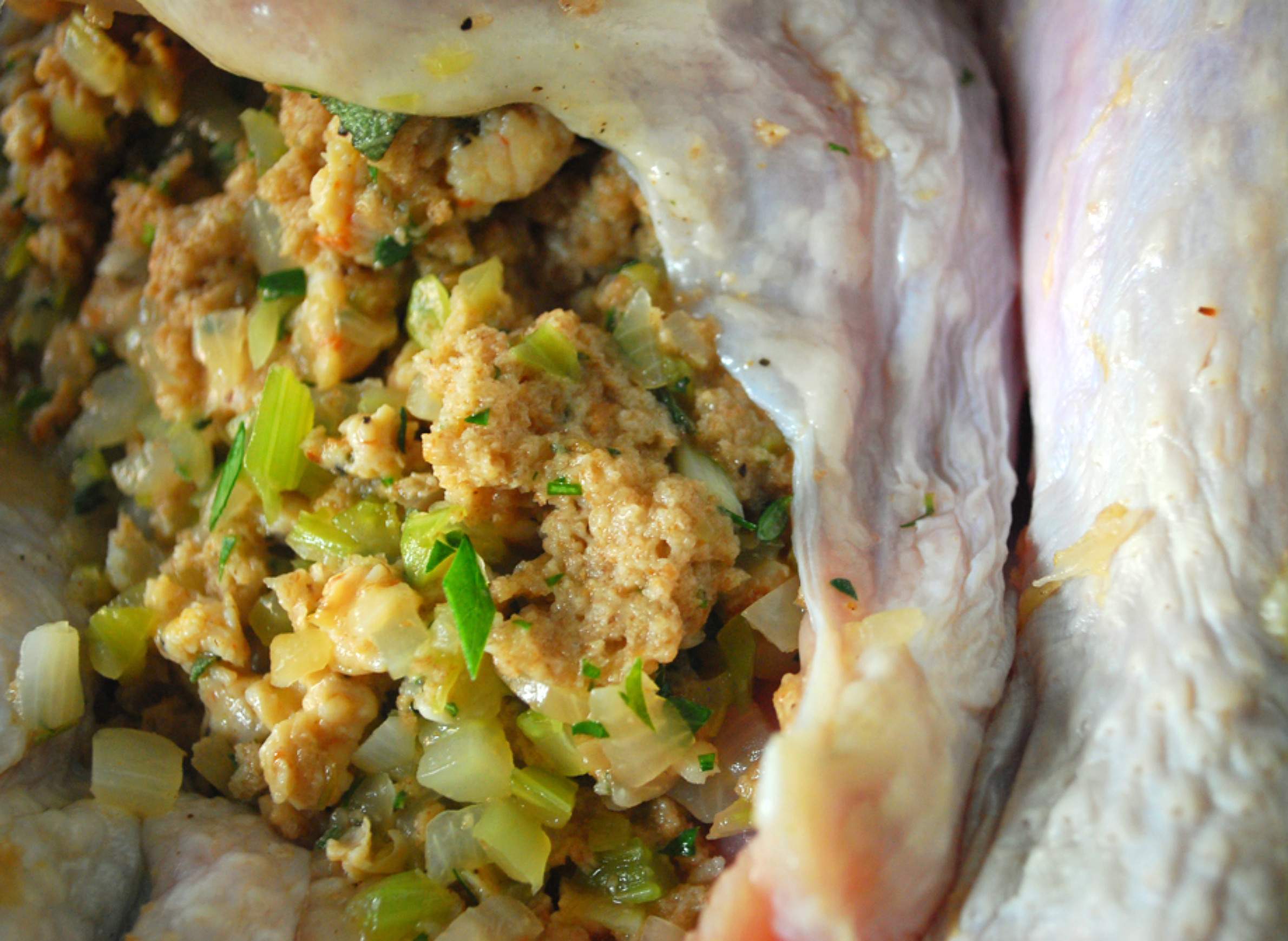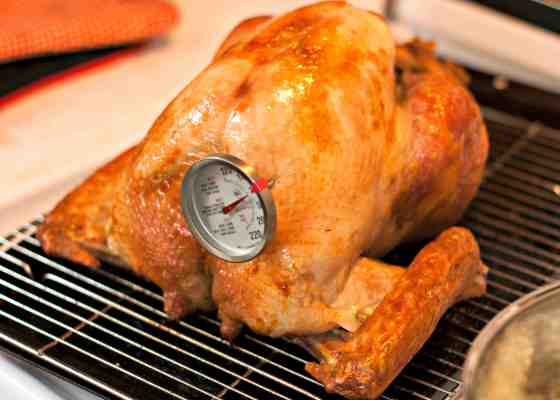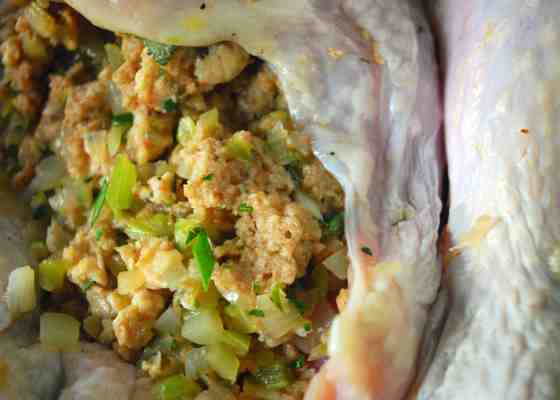
Safely Stuffing Family Starts With Safely Stuffing Birds

It's called by a variety of names around the United States: stuffing, filling and dressing. This side dish typically goes by the first around Wisconsin. No matter the name, though, it is a favorite for Thanksgiving and through the holiday season.
The ingredients used in stuffing are often regional as well. While it usually has a bread mixture base, other ingredients such as grains, pasta, fruits, vegetables, shellfish, sausage, giblets and nuts are also used. Stuffing can be spooned into the cavity of whole poultry or a pocket cut into a solid piece of meat, or spread on a flat piece of meat and then rolled.
However, because stuffing is an excellent medium for bacterial growth, it's important to handle the ingredients and final dish safely, and cook it to a safe minimum internal temperature as measured with a food thermometer.
Here are a few common questions asked about making stuffing.
How do you safely prepare stuffing? According to a U.S. Department of Agriculture guide, stuffing should not be mixed and stored in advance; rather, dry and wet ingredients can be prepared ahead of time and chilled. The USDA cautions against mixing wet and dry ingredients until just before spooning the stuffing mixture into a poultry cavity, in/on other meat, or into a casserole.
If using a whole turkey, chicken or other bird, the stuffing should be spooned in loosely at a ratio of about three-quarter cup per pound of poultry. The stuffing should be moist, not dry, because heat destroys bacteria more rapidly in a moist environment.
How do you safely cook stuffing? Immediately after preparation, the stuffed meat, poultry or casserole should be placed in an oven set to 325°F or higher. As cooking progresses, a food thermometer should be used to ensure that the stuffing reaches the safe minimum internal temperature of 165°F. If stuffing has not reached a safe temperature when the meat itself is done, it should continue to be cooked until it reaches 165°F. When cooking a stuffed turkey, both the meat and stuffing should reach at least 165°F, at which point the bird should be removed from the oven.
The cooked turkey should be allowed to stand 20 minutes before removing the stuffing and carving the meat.
What about making stuffing in a slow cooker? Cooking stuffing separately offers optimal safety and uniform doneness of this dish — the USDA suggests that one way to do this is to use a slow cooker.
To ensure the best preparation, several steps need to be followed:
- The uncooked stuffing needs to be very moist.
- The slow cooker should be filled loosely to no more than two-thirds full.
- The lid should fit tightly on the slow cooker.
- The stuffing should cook on the high setting for at least one hour before the setting is reduced to low.
- The stuffing should cook until the center reaches 165°F as measured with a food thermometer.
A slow cooker's manual may offer approximate times for preparing stuffing. Additionally, frozen stuffing (or other frozen foods) should never be placed in a slow cooker.
A two-hour rule also applies to leftovers — cooked turkey and stuffing should be refrigerated within two hours to avoid bacteria from multiplying in room-temperature food. Leftover stuffing should be eaten or frozen within 3-4 days.
Questions about safely preparing Thanksgiving dinner can be directed to the food safety experts at the USDA Meat and Poultry Hotline at 1-888-MPHotline (1-888-674-6854). Thanksgiving chefs can also chat live in English and Spanish through the USDA's "AskKaren" service. The USDA also provides handy fact sheets on safe stuffing practices in English and Spanish.
Barbara Ingham is a food science specialist with the University of Wisconsin-Extension.




